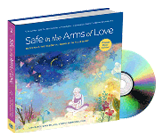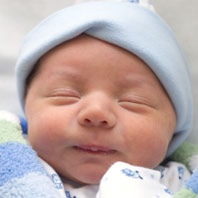Research
One of the most intriguing and visually arresting studies of attachment and connection between mothers and infants came from the provocative studies of Dr. Harry Harlow at the University of Wisconsin. Harlow studied infant rhesus monkeys and asked the question, was it just feeding that connected a baby to its mother or is comfort another important factor?
 Harlow’s results were striking. It was very clear that infant monkeys value food and comfort. They conducted the study by depriving baby monkeys of contact with their mothers. They gave the infant monkeys the choice between just wire- framed “mothers” with food, or “terrycloth” mothers who provided a sense of contact and softness. The infant monkeys were drawn to not only the nourishment but the comfort as well. Cuddly contact proves to an important factor in the survival of the infant monkeys. Monkeys exposed to “terry cloth mothers” survived better than those who were nourished but received no comfort. It was also learned that those baby monkeys who separated from their parents were more likely to have difficult peer relationships and were less able to raise their own babies. These principles are believed to apply to humans as well. In summary, feeding is necessary but not sufficient to support your baby. Intimate snuggly connection time is critical for healthy growth of infants.
Harlow’s results were striking. It was very clear that infant monkeys value food and comfort. They conducted the study by depriving baby monkeys of contact with their mothers. They gave the infant monkeys the choice between just wire- framed “mothers” with food, or “terrycloth” mothers who provided a sense of contact and softness. The infant monkeys were drawn to not only the nourishment but the comfort as well. Cuddly contact proves to an important factor in the survival of the infant monkeys. Monkeys exposed to “terry cloth mothers” survived better than those who were nourished but received no comfort. It was also learned that those baby monkeys who separated from their parents were more likely to have difficult peer relationships and were less able to raise their own babies. These principles are believed to apply to humans as well. In summary, feeding is necessary but not sufficient to support your baby. Intimate snuggly connection time is critical for healthy growth of infants.
Mary Ainsworth has conducted striking studies about how effectively children attach to their parents or caregivers. Ainsworth developed an experiment to see how babies reacted to their mother’s departure in what was perceived to be a stressful circumstance. They also observed what happens when there is a reconnection between parent and child. Called the Strange Situation, this experiment became a recognized experimental process to assess a child’s connection to parents. Observations revealed great differences among children who were secure vs. those who were not. A child that is secure showing greater adaptability and capacity to cope with issues in an unfamiliar situation. Security in a child is developed through the caregivers showing consistent awareness and responsiveness to an infant’s needs. A babies needs are continually shifting and parents who are able to adjust to those needs are likely to support the sense of security in their child.
John Kennell and Marshall Klaus explored the idea that there was a special period right after birth for a powerful physiological and psychological bond between parent and child. They suggested that a critical window existed for babies to attach to their parents. However, they also indicated that if the initial bonding did not occur right after birth, that a second window of opportunity occurred in the first trimester of a babies life. In other words, if a baby is compromised by health needs or other circumstances, there are additional chances to bond beyond those initial moments after being born.

 ♫ Always In Your Heart
♫ Always In Your Heart ♫ Angel of the Cosmos
♫ Angel of the Cosmos ♫ Rest of Our Lives
♫ Rest of Our Lives ♫ Safe in the Arms of Love
♫ Safe in the Arms of Love ♫ Song of the Ancestors
♫ Song of the Ancestors